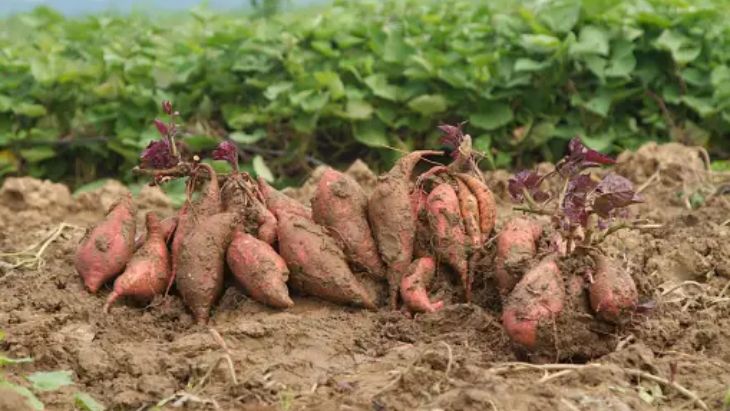Avocados, with their creamy texture and rich flavor, have become an increasingly popular fruit worldwide. Beyond being a delicious addition to salads and spreads, they are also a versatile and nutritious ingredient. What’s more, growing your own avocado tree can be a rewarding and fruitful experience. In this comprehensive guide, we will explore the step-by-step process of planting and caring for avocados to help you cultivate a thriving avocado tree right in your own backyard.
How to Grow and Care for Avocados
Choosing the Right Variety
Avocado trees come in various types, so it’s crucial to select the right variety that suits your climate and space. Some popular choices include Hass, Fuerte, and Reed. Research the specific requirements of each variety, considering factors such as cold tolerance and size, to ensure a successful harvest.
Gathering Seeds and Preparing for Germination
To grow an avocado tree, you have two options: starting from a seed or purchasing a grafted tree. If you choose to germinate your own tree, gently wash the seed and insert three or four toothpicks around its center. Place the seed on a glass of water, suspending it so that the bottom half is submerged. Position the glass in a warm area, such as a windowsill, and change the water every few days. Within two to six weeks, a stem and roots will emerge.
Planting the Seedling
Once the roots have grown to around two inches in length, it’s time to plant the seedling. Choose a large container with good drainage holes or prepare a sunny spot in your garden with well-draining soil. Dig a hole that is slightly larger than the seedling’s root ball and gently place the plant, ensuring that the top of the seed is above the soil line. Fill the hole with soil, lightly firming it around the base of the seedling.
Providing Optimal Growing Conditions
Avocado trees thrive in warm climates and require full sun exposure. Ensure your tree receives at least six hours of direct sunlight each day. Avocados prefer well-draining soil, so mix organic matter, such as compost or peat moss, into the soil to improve its texture and fertility. Additionally, avocados need regular watering, especially during dry periods, but be cautious not to overwater as excessive moisture can cause root rot.
Pruning and Training
To encourage a healthy and well-shaped tree, prune your avocado plant during the early stages of growth. Cut back the main stem by about one-third to promote branching. Once the tree reaches a desired height, pinch off the tips of new growth to encourage lateral branching. Pruning also helps manage the size of the tree and allows for easier harvesting.
Fertilizing
Avocado trees benefit from regular feeding to ensure robust growth and fruit production. Apply a balanced, slow-release fertilizer designed for fruit trees every three to four months, following the package instructions. Organic options, such as compost or well-rotted manure, can also provide essential nutrients.
Pest and Disease Management
While avocados are generally resilient, they can be susceptible to certain pests and diseases. Regularly inspect your tree for signs of aphids, mites, or fungal infections. Integrate natural pest control methods, such as ladybugs or organic sprays, to manage infestations effectively. Proper sanitation and hygiene, including pruning away diseased branches, can help prevent the spread of diseases.

Harvesting
Growing avocados requires patience, as it can take several years for the tree to reach maturity and bear fruit. The time to harvest varies depending on the variety, but generally, avocados are ready to be picked when they change from green to a dark green or black color and yield slightly to gentle pressure. Avoid pulling or twisting the fruit, as this can damage the tree or the avocado itself. Instead, use a gentle upward motion to detach the fruit from the stem.
Storing and Ripening
If you harvest avocados before they are fully ripe, you can allow them to ripen off the tree. Place them in a paper bag with a ripe banana or apple, which emits ethylene gas, a natural ripening agent. Keep the bag at room temperature, checking daily for ripeness. Once they reach the desired level of softness, transfer them to the refrigerator to prolong their shelf life.
Protecting from Cold Temperatures
Avocado trees are sensitive to frost and cold temperatures, especially young saplings. If you live in a region with colder winters, take measures to protect your tree during the colder months. Consider covering the tree with a blanket or using frost cloth to shield it from freezing temperatures. Additionally, providing mulch around the base of the tree can help insulate the roots.
Continuous Care and Maintenance
Avocado trees require ongoing care to thrive and produce abundant fruit. Regularly monitor the moisture level of the soil and adjust watering accordingly. Mulching around the base of the tree helps retain moisture and suppresses weed growth. Conduct periodic soil tests to assess nutrient levels and adjust fertilizer applications as needed. Pruning should be done annually to remove dead or damaged branches and maintain an open canopy.



